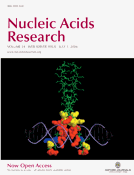Protein methylation is one of the most important reversible post-translational modifications (PTMs). As a key regulator of numerous cellular processes, protein methylation is involved in almost all aspects of cell metabolism, development and differentiation (Chen et al., 2006). Protein methylation can occurr on either backbone or side-chain of several types of amino acid residues including lysine (K), arginine (R), proline (P), histidine (H), alanine (A), and asparagine (N) in the form of N-methylation (Bedford et al., 2005, Lee et al., 2005). Also, O-methylation of glutamic acids (E) and S-methylation of cysteine (C) and methionine (M) residues were also reported (Predel et al., 1999, Lapko et al., 2005). The predominant studies have focused on the N-methylation of lysine and arginine residues since they are widely involved in cellular activities (Paik et al., 2007, Guo et al., 2014). Recently studies have shown that protein methylation plays an important role in gene regulation, epigenetics, and disease development (Yu et al., 2012, Brinkmann et al., 2014, Li et al., 2014, Zhang et al., 2014). Lysine methylation can be classified into mono- (K.momo), di- (K.di), and tri-methylation (K.tri) according to the amount of hydrogen atoms on amino-groups substituted by methyl-groups, while arginine methylation can be classified into mono- (R.mono), symmetry di- (R.s.di), asymmetry di-methylation (R.a.di) (Paik et al., 2007). Different methyltransferases catalyze different types of protein methylations. So far, most studies have focused on the histone methylation, but as the rapid development of high-throughput methodology and technology, more and more attention has been given to non-histone methylation. Benefit from the development of these techniques, the large-scale identification of protein methylation has been greatly advanced recently.
In this work, we adopted GPS 3.0 algorithm and built GPS-MSP (Methyl-group Specific Predictor) for the prediction of general or type-specific methylline and methylarginine residues in proteins. We also construced up to 28 organism-specific predictors. We implemented GPS-MSP into a webserver, which also provides the information of secondary structures, protein surface accessibility, and the statistics of prediction results (See WEBSERVER).
For publication of results please cite the following article:  Computational prediction of methylation types of covalently modified lysine and arginine residues in proteins
Computational prediction of methylation types of covalently modified lysine and arginine residues in proteinsWankun Deng, Yongbo Wang, Lili Ma, Ying Zhang, Shahid Ullah, and Yu Xue. [Abstract][Full Text]
|
 MeMo: a web tool for prediction of protein methylation modifications.
MeMo: a web tool for prediction of protein methylation modifications.Hu Chen, Yu Xue, Ni Huang, Xuebiao Yao, Zhirong Sun Nucleic Acids Research. 2006, 34(Web Server issue):W249-53. |



